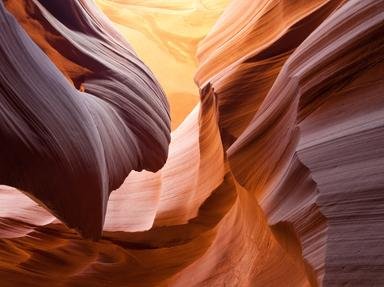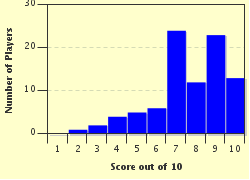Quiz Answer Key and Fun Facts
1. The molten rock that sits below the earth's surface is called what?
2. Which sedimentary rock reacts with hydrochloric acid?
3. A gneiss is what type of rock?
4. Which mineral has a hardness of 2 on the Mohs hardness scale?
5. The Red Sea is an example of what type of large-scale geological feature?
6. Australia's Uluru is a monolith composed of what type of rock?
7. A caldera is the result of what geological event?
8. The thin plate-like mica mineral muscovite was traditionally used for which purpose?
9. What are the names of the two main types of basaltic lava flows that occur on Hawaii?
10. Granite is mainly composed of which two minerals?
Source: Author
jry63
This quiz was reviewed by FunTrivia editor
rossian before going online.
Any errors found in FunTrivia content are routinely corrected through our feedback system.

